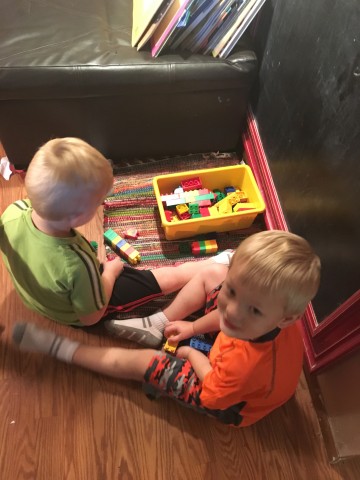And Debbie is my name-o

And Debbie is my name-o
Sing to the tune of BINGO
D- e -b -b -i- e
D- e- b -b- i -e
D- e -b- b- i- e
Debbie is my name-o
This is the song we are singing to teach names to our littles . When you are driving or getting ready for bed or just playing this is an easy , fun way you can help us teach your child.
We did more name play today. We counted the letters in our name and made a graph !

Through out our day the children make many choices. As adults we choose hobbies. Some of us may sing while others play golf or watch movies. We spend time in these activities because we enjoy them. We also pick the activity because we have some control over it – possibly it is something we are good at.
Children , too, learn best when they have some control over what they are doing and have a good chance to be successful at it. They learn when activities are meaningful and relevant .
What if someone said ” Today you will paint this picture of a horse .” You are not a painter . You don’t honestly like to sit still. What will you learn ? You will learn that you can’t paint a horse. Is that helpful ?
Children thrive when they have opportunities every day to make choices in their learning . We facilitate children’s choices within our carefully planned environment . We create an environment in which each child has several choices of activities to do that are developmentally appropriate for his age and that he might enjoy. The children chose where they will play, who they will play with and what materials they will engage with. Many facilities have center rotation charts. Children go to a center to play and when the bell rings they rotate . The general idea is by doing it this way each child is exposed to all materials . We do not structure our day this way. We encourage children to make different choices but we don’t force it. We notice and document where children are spending the majority of their time and which friends they are playing with . It helps us to plan .

The choices empower the children to take control of their own learning. It makes our job as teachers a little more difficult. We have to walk around and engage in conversation and scaffold and build on the knowledge they already have . Sure, it would be easier to sit with flash cards or rote teach the letters of the alphabet . We could throw color sheets on the table that have the letters on them but it would be meaningless at this point. Children need movement and choices. The children sometimes use the materials in more complex and innovative ways than we could even imagine.
Research indicates that intrinsic motivation – when we work on something mainly because we find it enjoyable or satisfying – is the most effective and engaging way to learn. That’s a key reason when you visit our room you will see children moving, talking and making choices.

